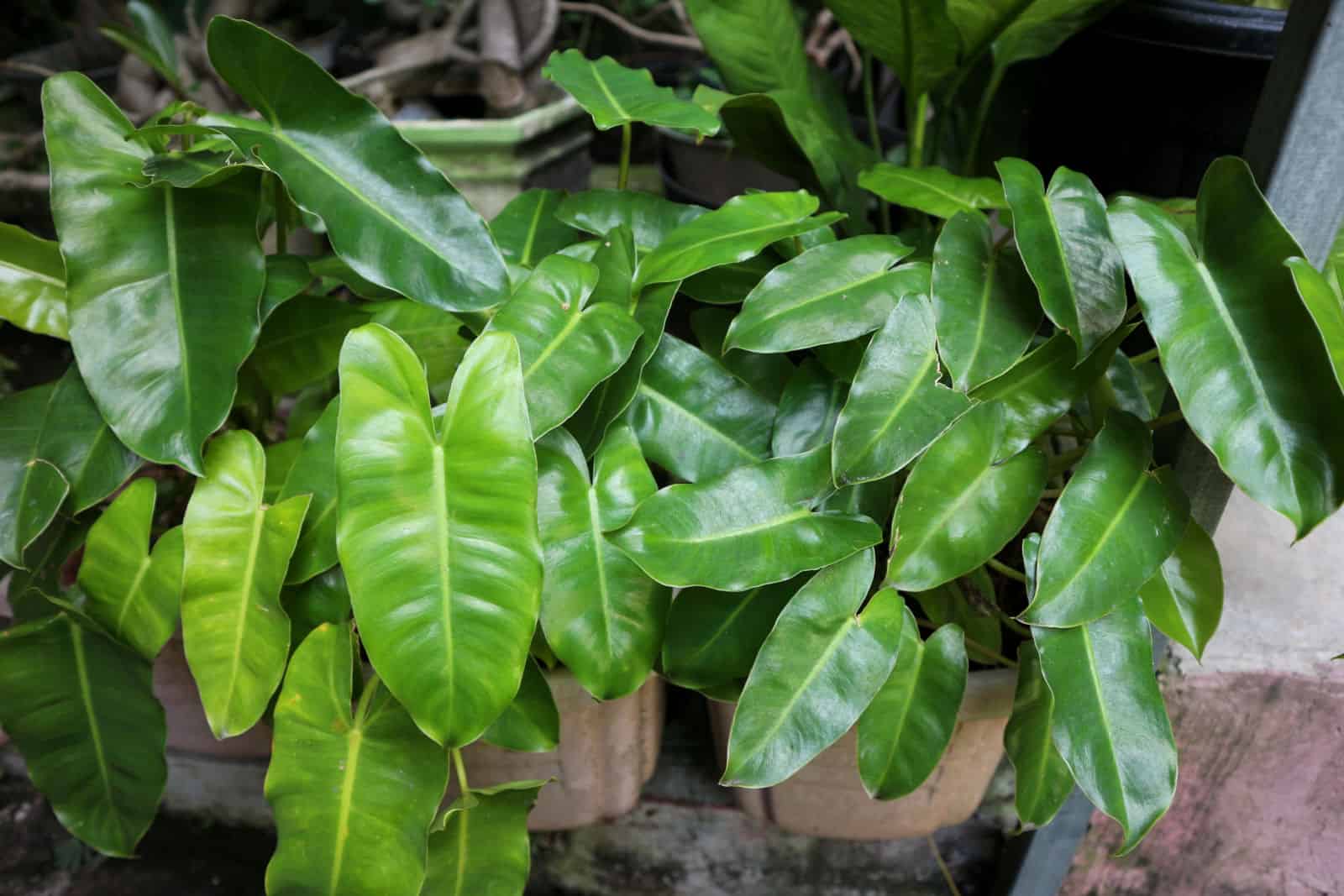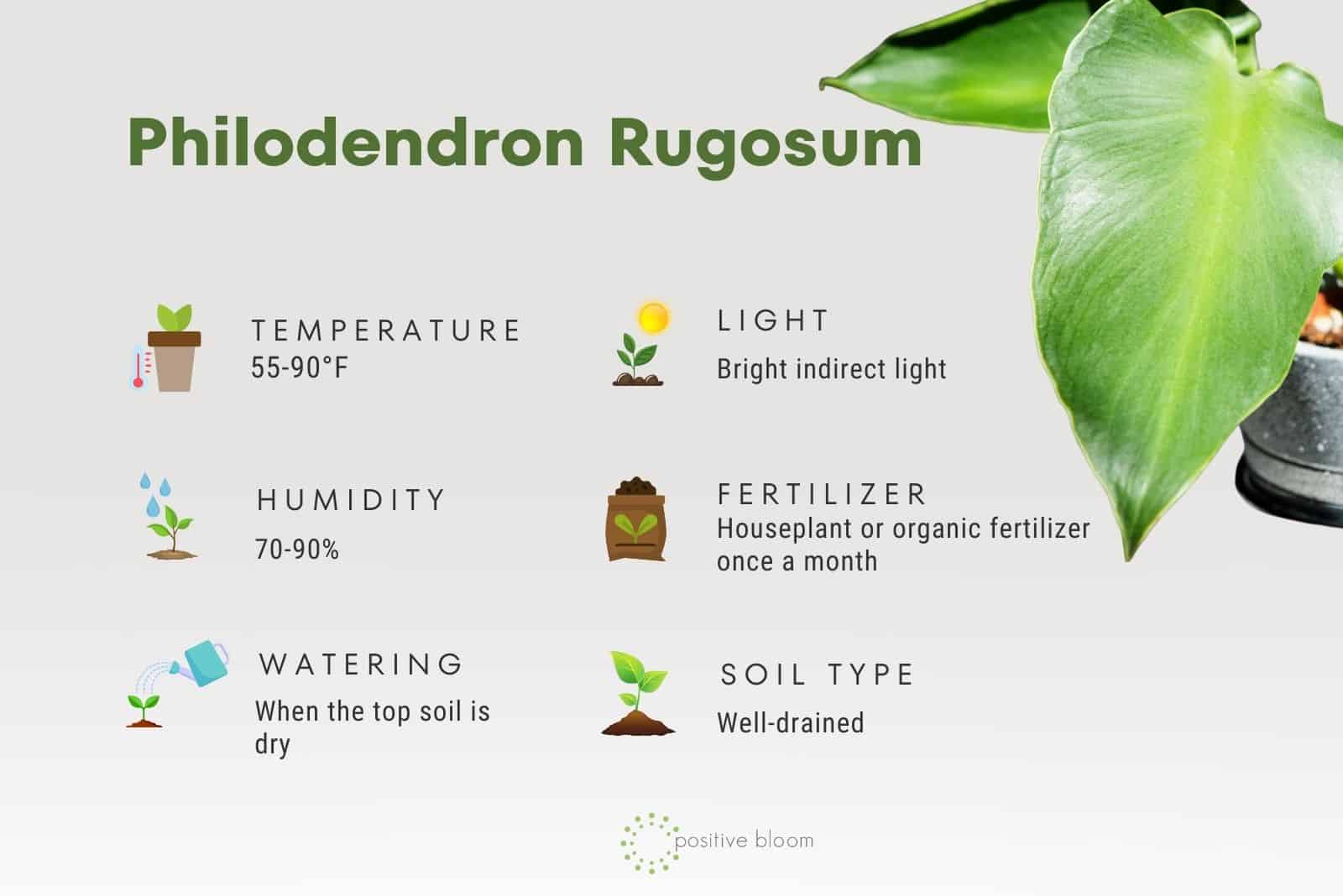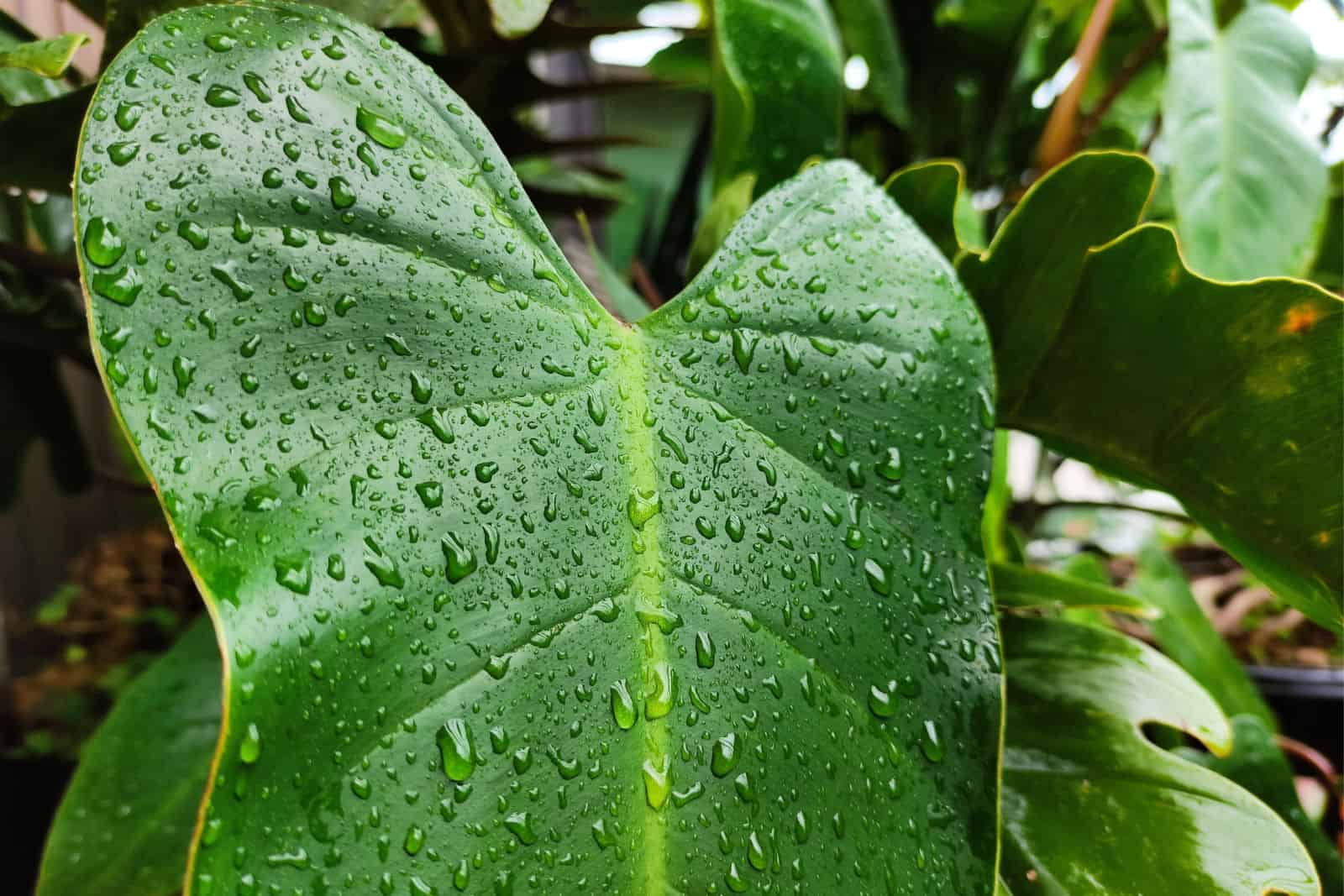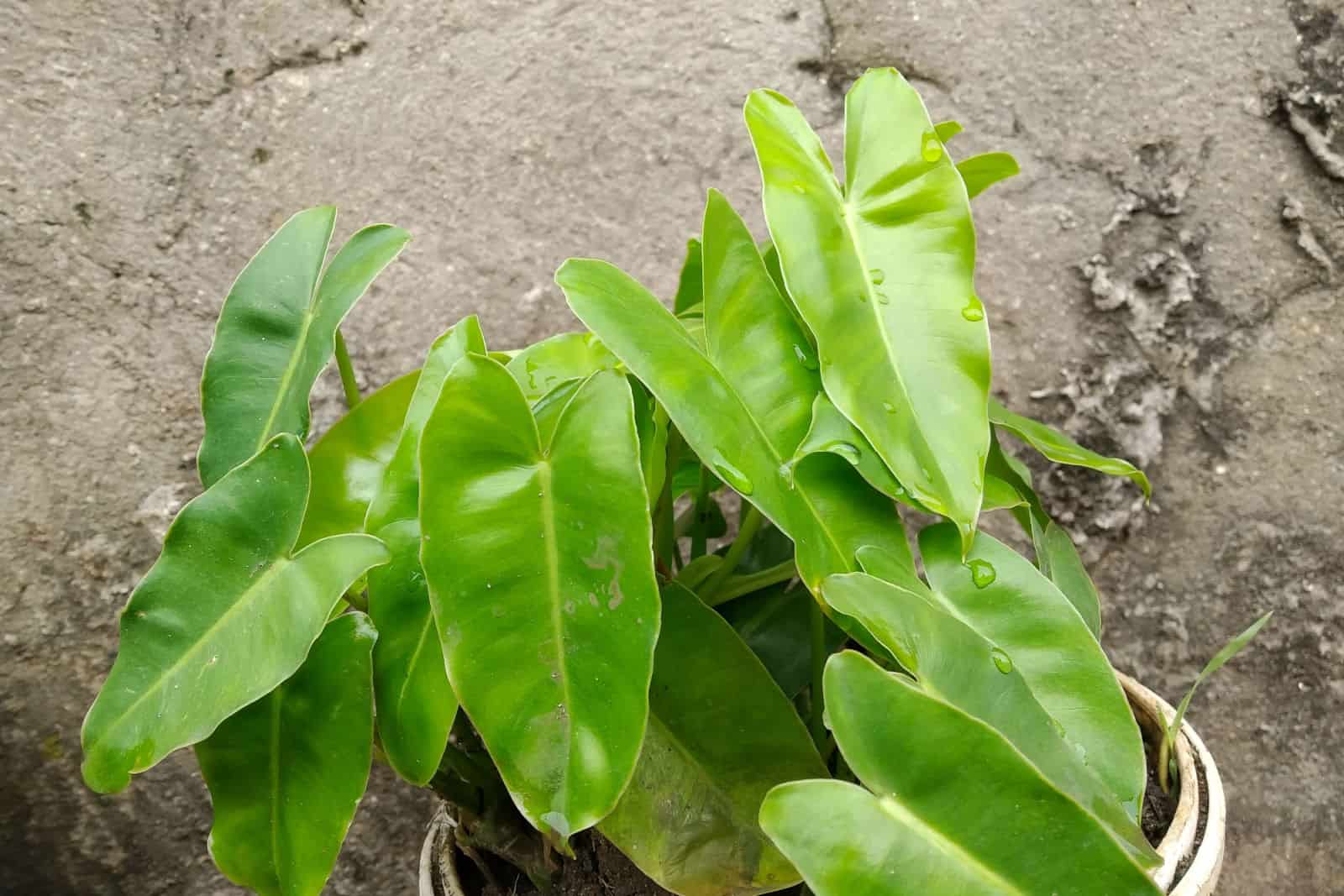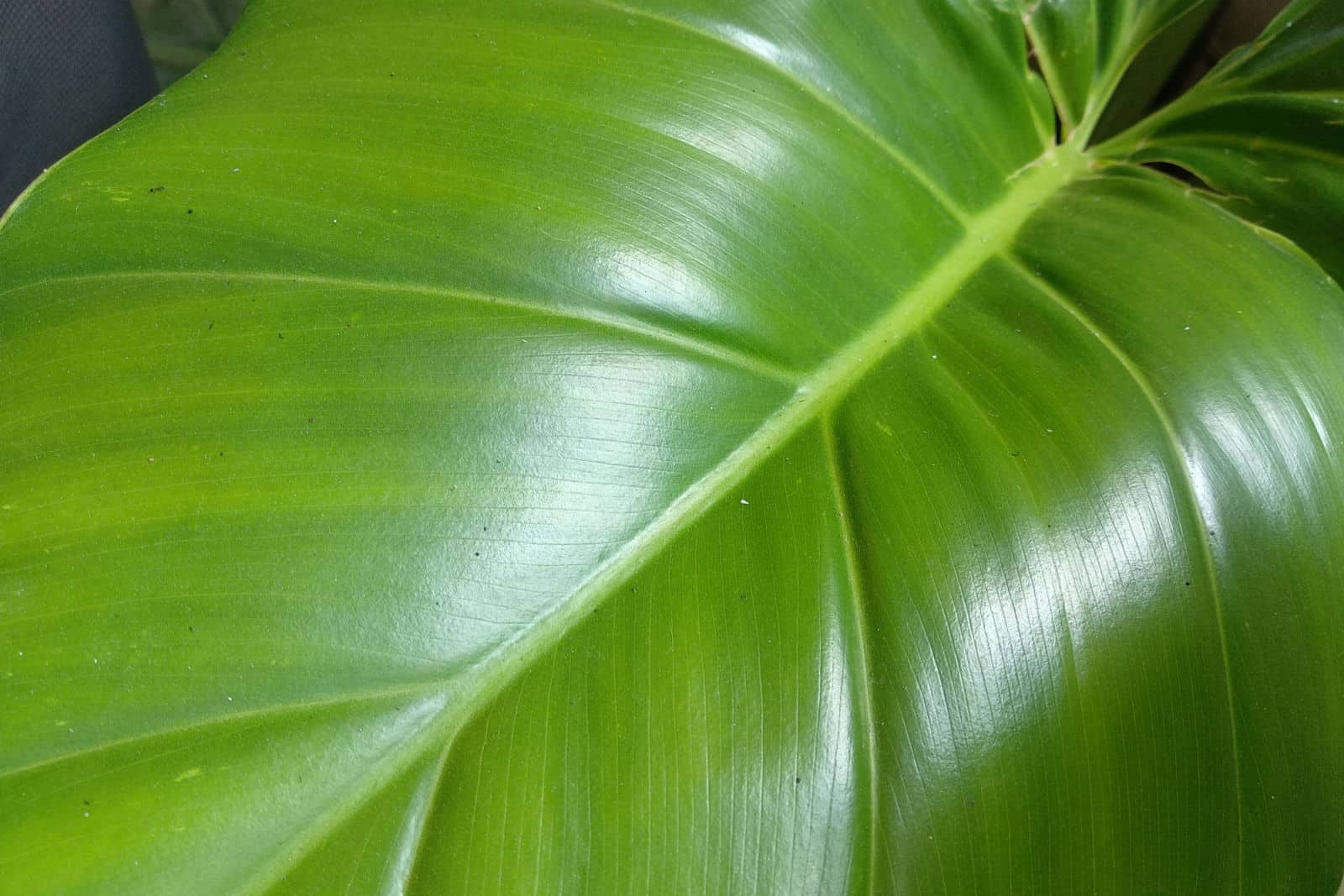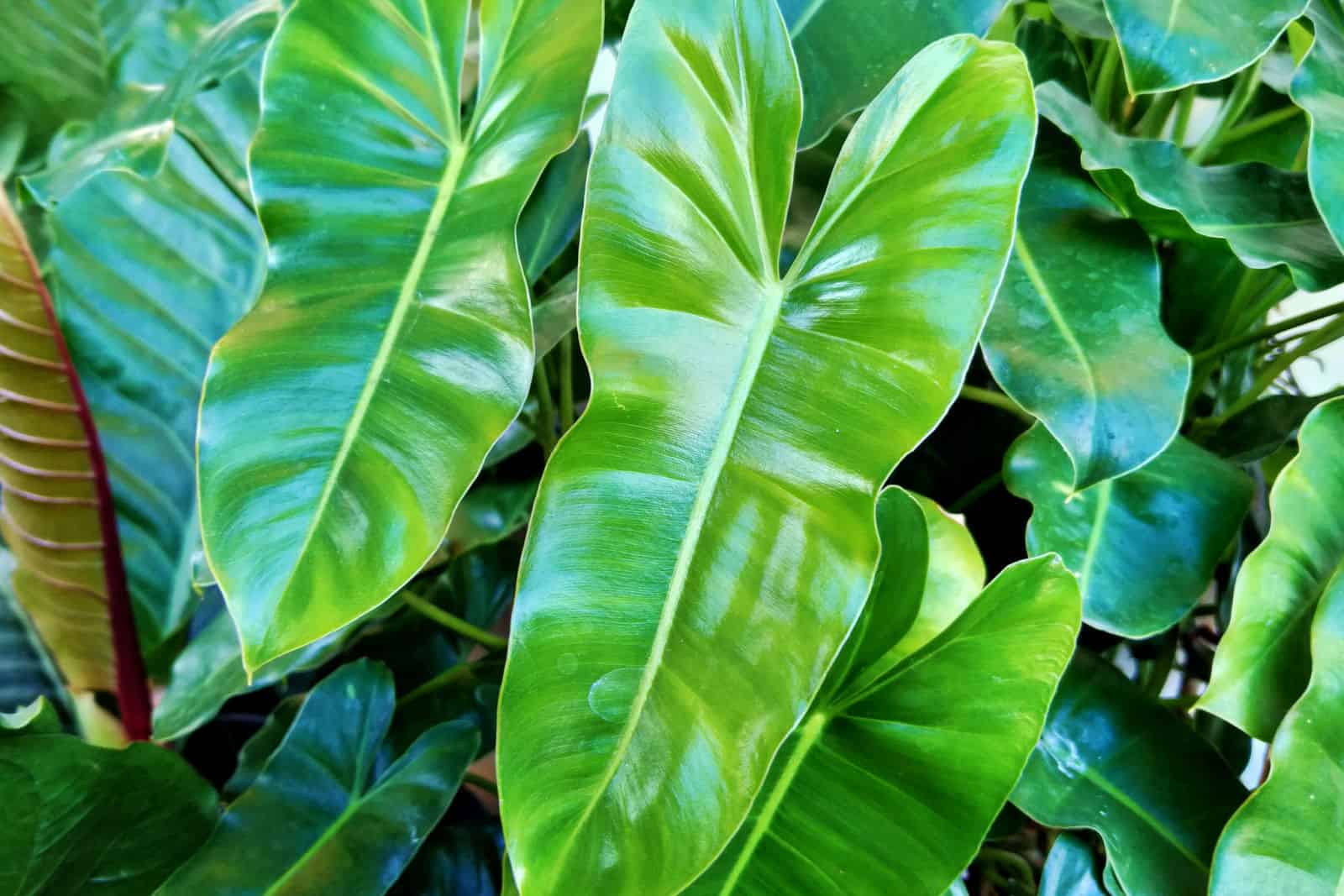The Philodendron rugosum is a low-maintenance tropical plant that many passionate gardeners want to add to their collection.
Its leaf texture makes it a one-of-a-kind plant as, due to its thickness and leathery appearance, it resembles animal hide.
As well as being quite attractive, this philo doesn’t need much care; place it in dappled shade, grow it in moist soil that’s well-draining, and it will thrive.
There’s even a claim that the rugosum is an air-purifying plant, which makes it all the more perfect.
In the following article, you can read all the essential information regarding the care guide for this houseplant and learn more about what common pests and diseases may attack it.
Before we get there, let’s learn some of its specifics:
[table id=663 /]
Philodendron Rugosum Plant Care
The main Philodendron care guide is almost the same for all members of this genus, which is why this variety also requires a well-draining potting mix, indirect sunlight, and occasional watering.
Of course, there are some other things you should consider, such as the preferred temperatures, whether or not to fertilize it, how and when to prune and repot it, etc.
Therefore, we’ll also discuss all these things so that you can care for this philo perfectly.
Light Requirements
The Philodendron rugosum requires bright indirect light for optimal growth and development.
Therefore, you should expose it to the sunlight in eastern and southern windows since direct sunlight in the early morning or late afternoon isn’t harsh enough to burn its unique foliage.
You can also place it a couple of feet away from west-facing windows or close the curtains to filter the sunlight and make it less dangerous.
And if you don’t have a sunny window in your home, you can always use artificial lighting; just don’t place it too close to this indoor plant.
Water And Humidity
The care guide for the philodendron ‘Prince of Orange’ is almost the same as the one for your P. rugosum, so you can grow them together if you need a splash of color in your home decor.
When it comes to watering this plant, you should only do it when the top soil is dry in order to avoid overwatering and root rot.
You should never follow a fixed watering schedule since there may come a time when your plant doesn’t need that much moisture (for instance in winter or in particularly high humidity), and if you continue irrigating it with the same frequency, you’ll definitely overwater it.
When watering the P. rugosum you should pour water at its base until you notice the excess draining out through the holes in the bottom.
Finally, remember to use filtered or rainwater since they don’t contain chlorine or fluoride, which may build up in your plant and cause improper absorption of moisture and nutrients.
You can use tap water if it doesn’t contain high concentrations of these compounds. Leave it in the open for about 24 hours and the chlorine will evaporate and make the liquid a bit safer to use.
Humidity
This philodendron comes from the tropical regions of Ecuador where humidity levels are rather high, which is why you should maintain air moisture at around 70-90%.
You can achieve this by turning on your humidifier or spraying your plant with some water every once in a while. (Don’t overdo it since that can lead to fungal diseases.)
Temperature
The philo rugosum can tolerate a wide range of temperatures, (between 55-90 degrees Fahrenheit) but you will have to adjust the watering accordingly.
For instance, in higher temperatures you’ll probably need to irrigate it more frequently, and vice versa.
This plant cannot handle cold temperatures, which is why you should keep it indoors overwinter if you plan on growing it outside.
Finally, avoid placing it near air conditioners, heaters, drafty windows, doors, and similar places which experience sudden temperature changes.
These locations usually have lower humidity due to constant airflow, and the fluctuations can stress out the plant.
Soil And Fertilizer
The ideal soil mix for the pigskin philodendron must drain well. The good news is that these plants thrive in high-quality potting soils, and you can make your own if you want.
For instance, you can mix equal parts sphagnum moss-based substrate, orchid bark, and perlite to ensure perfect drainage and moisture retention.
You can also add some worm castings, which will make the medium more fertile and allow you to go a couple of weeks (or months) without fertilization.
Fertilizer
This plant responds well to regular fertilization, so you should feed it about once a month during its growing season.
You can use regular houseplant fertilizer or an organic variant. (You usually have to dilute them to half-strength, so don’t forget to do so or else you might burn your plant’s roots.)
We love using slow-release pellets as they feed the plants over time without us having to worry about it. If you use a similar product, you won’t have to fertilize your philodendron more than 2-3 times a year.
Repotting
The basic requirements for the ‘Splendid’ philodendron, rugosum, and any other species are almost the same, and one of them is repotting.
The general repotting rule is to move this plant to a new container once every 1-2 years or whenever you see the roots peaking through the holes in the bottom.
The best time to transplant this philo is in spring or summer since that’s when your plant grows and can adapt to its new environment without much trouble.
When choosing a plant pot, always go for one 1-2 sizes larger and with drainage holes. Containers that are too large and lack holes can lead to waterlogging.
Experienced growers tend to get terracotta planters as they ensure optimal drainage.
Once repotting time arrives, you need to take your rugosum out of its pot and spread the roots if the plant is pot bound.
Then, place some potting medium in the bottom of the new container, plant your philo, and fill the planter with substrate until the entire root system is covered.
Water your plant thoroughly and move it to a location with plenty of filtered sun.
Pruning And Cleaning
Pruning the dark green leaves of this plant might be difficult to bear, but removing its top can help you maintain its size and promote branching for fuller growth.
However, you shouldn’t remove more than a quarter of the plant since that may stress it out too much and stunt its development.
You should always remove old, discolored, and infected foliage since they will only hurt your plant, take up room where new leaves could appear, and result in your plant appearing sad and lifeless.
Cleaning
Pruning is not the only type of maintenance you should do for your philodendron. It is important to clean this plant’s leaves because dust can prevent them from photosynthesizing normally.
Luckily, you can easily clean them; all you need is a damp cloth to remove the dust. Some growers take it to another level and use olive oil, which leaves a beautiful shine afterwards, or dish soap.
We’ve tried these methods and have concluded that using olive oil is great for shine, but it also leaves a thin, greasy layer to which dust sticks like crazy.
And when it comes to dish soap, you really have to wipe the leaves to remove all residue.
All in all, a slightly damp cloth works best and saves you time!
Propagation
There are many methods and techniques for propagating the P. rugosum, but today we’ll talk about the three most common ones: division of the roots, taking stem cuttings, and air layering.
Root Division
Separating the plant’s roots is one of the easiest and most successful methods of propagating philodendrons.
Step 1. Take your plant out of its container and look for clumps of stems.
Step 2. Remove the dirt around the philodendron’s root system and follow the stems to see whether they have roots.
Step 3. Gently start separating the stems and disentangling the roots. You can usually do it by hand, but if everything is stuck, you should use sharp and sterilized scissors or a knife to cut through the roots.
* It is better to cut some roots than damage more of them by pulling and tugging forcefully.
Step 4. Once the plants are all divided, fill the separate containers with a well-draining plant soil, place the philodendrons in it, and cover the roots with more potting mix.
Step 5. Water the propagated pigskin philodendrons deeply and place them in a location with bright filtered sunlight.
Stem Cuttings
Using cuttings to propagate philodendrons is one of the most common ways of multiplying these plants, so we’ll present a step-by-step guide on how to do it.
Step 1. Choose a healthy stem you wish to reproduce and ensure it has aerial roots since that can increase the success rate.
Step 2. Place the cutting in water or a well-draining potting mix. (For water propagation, you should replace the medium whenever it gets foggy.)
Step 3. Cover cuttings propagated in soil with a plastic bag or cover to trap the air moisture in and encourage faster rooting.
Step 4. Make sure the potting mix is never dry (and always clean in water propagation) and expose your plant to warm temperatures and plenty of indirect light.
* Once stem cuttings placed in water develop a root system, you can move them to the soil mix.
Air Layering
This last method might seem a bit more complicated than the previous two, but it is fairly easy once you get the hang of it and you won’t have to do any cutting or dividing at the beginning.
Step 1. Choose part of the plant close to the top you wish to propagate and find a leaf node. (You can choose a node below two leaves so that when you cut it later, you’ll already have beautiful foliage.)
Step 2. Wrap moist sphagnum moss around the node (and the stake) to create a ball, and secure it with cling film.
Step 3. You can leave the top of the ball open if you like, and also mist the moss from time to time. Some growers also leave the bottom open for the roots to protrude if they need more space.
Step 4. In about 2-3 weeks, the root system should develop, and that’s when you cut below them and transplant your new philodendron into a new pot.
* And if the roots don’t develop, there’s no harm done, as you don’t have to cut your plant.
Common Issues With The P. Rugosum
The most common issues with plants such as the rare philodendron ‘Red Princess’, the verrucosum types, and the rugosum, are infestations and fungal diseases.
The good news is that you can avoid dealing with these problems if you meet all your plant’s requirements, especially those concerning water.
Overwatered plants can suffer from root rot (which is a fungal disease) or become weak and prey to houseplant insects.
Therefore, if you want to avoid these issues, simply water your philo rugosum only when the top portion of the substrate is dry.
And if you still have to deal with these issues, you can learn more about treating them in the following sections.
Pests
The usual pests that infest the pigskin philodendron are spider mites, aphids, mealybugs, etc. These insects drink its sap and make it weaker and weaker by the day.
Therefore, it is important to deal with these nuisances as soon as you catch a glimpse of them.
You can pick them off by hand if the infestation is small, or use a cotton swab drenched in rubbing alcohol and remove them one by one. (Just make sure not to touch your plant with it as the alcohol might burn it.)
You can also use organic pesticides such as neem oil or diatomaceous earth if the infestation is large.
Diseases
Just like with most indoor plants, the most common illness that afflicts this philodendron is root rot. This (in most cases) fungal disease is caused by overwatering, so it can easily be avoided.
Irrigate your rugosum philodendron only when the top part of the potting mix is dry, plant it in a well-draining substrate, and ensure that its container has drainage holes.
But if you still suspect this might be the cause of your plant’s yellow foliage, stunted growth, and droopiness, you should examine the roots.
Rotten roots are brown or black and mushy to the touch, and you should remove them all before putting this tropical plant in a fresh growing medium and clean planter.
You can also spray the healthy roots with a broad-spectrum fungicide, which will prevent the return of this disease any time soon.
FAQ
Is the Philodendron rugosum rare?
Yes, the P. rugosum is considered to be a rare species because its native habitat is getting destroyed by industries.
There is also a Philodendron rugosum aberrant form, which is an incredibly rare mutation characterized by thick, rough, large foliage.
One thing is that you can combine it with the rare Philodendron mamei as they have virtually the same needs.
Is the Philodendron rugosum a climber?
Yes, the P. rugosum is a climbing variety, which means you can support its growth with a moss stick, a bamboo stake, or any other alternative.
Final Thoughts
The Philodendron rugosum is a unique plant with thick and textured foliage that resembles pigskin, hence its common name “the pigskin philodendron”.
This treasured variety may be rare, but its care guide is simple; provide it with bright indirect light, warm temperatures, well-draining potting soil, high humidity, a bit of water, and it will thrive.
It does have a couple of advanced requirements, such as repotting, pruning, and fertilization, but that’s nothing to be afraid of; almost every plant needs these things.
Sadly, this philodendron isn’t completely resistant to pests and diseases, but you can avoid dealing with them if you follow the plant’s care guide.
And if these issues do occur, you can always check out our section on how to deal with them.
Until next time!

